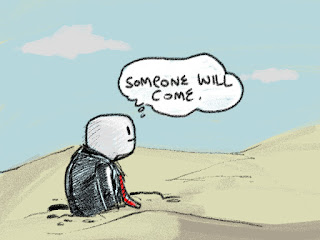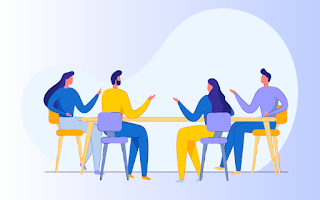Why is Rational Decision Making Difficult?
Error in our decision making!
Decision Making is part of life. We make decisions every day, every moment and sometimes every hour. These decisions vary from a simple decision like deciding what to eat or what to wear to more complex decisions like how to deal with problematic clients or what career to pursue!
How do you make decisions? Do you take into account all the evidence and facts that are there? Do you make decisions based on your gut feeling or intuition? Do you let your emotions decide for you? Do you think through each decision? Do you rush through them?
We often find ourselves making decisions based on our emotions or gut feeling. Sometimes our decisions are influenced by our peers. At times to make sense of the situation, we often just look at one side of the situation (usually the one that is congruent with our beliefs and values) and overlook the other part. Often, we find it difficult to make well-balanced, well-thought-of rational decisions.
Think about an important decision you took in the past week. Ponder on these questions. Did your emotions and feelings influence your emotions? Did your intuition play a role in that decision? Did you take into account the entire picture while taking a decision? These questions will help you reflect on whether your decision was rational.
Why is rational decision making a difficult process? Let’s look at some of the barriers to rational decision making.
Negativity Bias
As the name suggests, we tend to focus on the negative aspects of the situation more than the positive aspects. In multiple pieces of research, it has been shown that humans are more sensitive to negative information. Have you stopped yourself from doing something because you focused more on negative consequences?
For example, a student doesn’t give an entrance exam because he failed at it last time. He focused on the negative aspect of the situation, that is, failure in the exam instead of the positive aspect, that is, getting into a top tier college.
Optimistic Bias
This is quite contrary to negative bias. People tend to expect things to turn out well overall. In other words, people have a belief that they are more likely to experience positive events and less likely to experience negative events. A lot of team leaders often experience this. They often believe that their plan will work or there will be no failures in the project.
Some leaders also experience what is called planning fallacy, that is, they believe that they can get more work done in a given time or they believe that a project will take less time. This often results in team leaders setting unrealistic deadlines. Often managers and team leaders overlook possible barriers or obstacles in the project while deciding timelines.
Anchoring Bias
How often do you find yourself making a decision on little information or first information? A lot of us find ourselves making decisions on little or first information we receive. This is known as anchoring bias. The first piece of information often plays a huge role in influencing our decision.
For example, you wish to buy a shirt. The first place you go to is selling shirts for $50 (first source of information). The second place is selling a shirt for $40. You will most likely buy the second shirt because it is cheaper than the first (another shop might be selling it for $35). The price of the first shirt becomes your point of reference and influences your decision greatly. We do not conduct further research.
Overconfidence Bias
It’s good to be confident about your decision. However, overconfidence often results in a faulty decision. Overconfidence bias is the tendency of a person to more confidence in our beliefs and judgments than is justified.
Often, people overestimate their skills, values, knowledge, etc. and take decisions that are highly unrealistic and irrational. For example, a new sales employee overestimates his skills and sets a target of selling 10,000 books in one month. This decision is not based on facts and figures but too much confidence in one’s skill.
Loss-Aversion Bias
In projects or at work, we often fear to lose our growth or progress that we have made. This prevents us from taking risks and achieving better outcomes. Loss Aversion bias states that people fear losing more than gaining something.
For example, a project is not making enough profit. However, the team leader, instead of discontinuing the project, choose to continue operations because of loss-aversion. The fear of losing a job is more than the gain (in this case working on a profitable project).
Counterfactual Thinking
We tend to compare our outcomes with other outcomes. Counterfactual thinking is our tendency to imagine other outcomes in a situation than the ones that occur (“what might have been”). This is something I used to experience (especially concerning my career). I used to find myself asking, “What if I took engineering instead of psychology; how different my life would have been?” This counterfactual thought always resulted in distress and anxiety and impacted my self-esteem.
Concerning decision making, counterfactual thinking influences our decisions about the project midway. For example, a team decides to change its plan of action in the middle of the project because they pondered about other outcomes.
There are many more biases and thinking errors that influence decision making. How many of these do you experience? What are some other barriers that you experience while making decisions?




Comments
Post a Comment